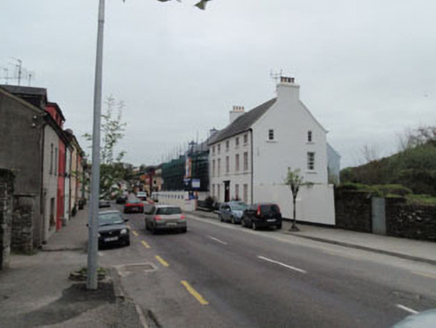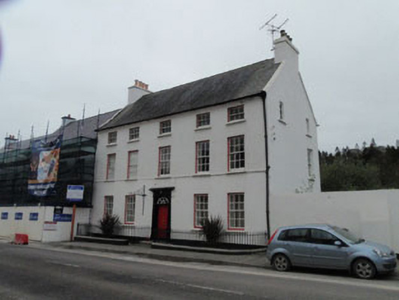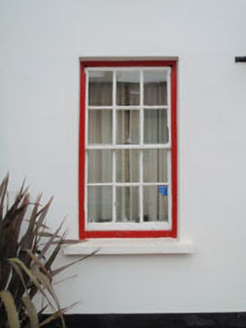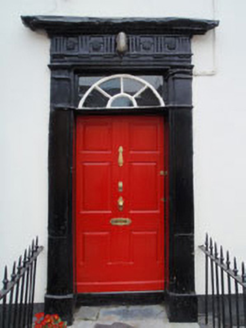Survey Data
Reg No
20849026
Rating
Regional
Categories of Special Interest
Architectural, Artistic
Original Use
House
In Use As
House
Date
1740 - 1760
Coordinates
154536, 57105
Date Recorded
22/04/2009
Date Updated
--/--/--
Description
Attached five-bay three-storey over basement house, c.1750, on a rectangular plan; three-bay three-storey rear (south) elevation. Pitched slate roof with ridge tiles, coping to gables with rendered chimney stacks to apexes having chamfered capping supporting terracotta pots, and cast-iron rainwater goods on roughcast eaves with cast-iron octagonal hopper and downpipe. Rendered wall (ground floor); roughcast surface finish (upper floors); rendered walls (remainder). Square-headed central door opening with two cut-limestone steps, timber doorcase with pilasters on plinths supporting dentilated ogee-detailed cornice on rosette-detailed triglyph frieze on architrave framing timber panelled door having fanlight. Square-headed window openings with concrete sills, and concealed dressings framing six-over-six or three-over-three (top floor) timber sash windows without horns having part exposed sash boxes. Street fronted with wrought iron railings to perimeter.
Appraisal
A house representing an important component of the eighteenth-century domestic built heritage of Inishannon with the fanlit Doric doorcase at its centre, the diminishing in scale of the openings on each floor producing a graduated visual impression, and the high pitched roof, all rooted firmly in the Georgian fashion. The retention of much original fabric, including shimmering glass in hornless sash frames and contemporary casings and linings, contributes significantly to the character of the house. Westropp House is said to have been built by Thomas Adderley (1715-91) as the nerve centre of a linen works (1748) which included 'thirty slate-roofed houses for French protestant refugees and a charter school for forty pupils [1752]'. Mary Delany (1700-88) described Adderley (1752) as 'one of the worthiest men in the world; he spends his life in doing good and generous actions' but, by 1775, the linen works was in decline and efforts to establish carpet, cotton and silk factories were unsuccessful. Westropp House is believed to have been occupied by Captain Amos Freeman Westropp (1782-1844) who 'conveyed the Duke of Wellington to Lisbon during the Peninsular War and escorted Napoleon I to Saint Helena in 1815' (The Trafalgar Roll 1913, 61). Westropp House was subsequently occupied by Horace Payne Townshend (1824-85) whose daughter, Charlotte Payne Townshend (1857-1943), married (1898) George Bernard Shaw (1856-1950). Westropp House was later the occasional residence of Hugh Moreton Frewen (1853-1924) and Clarita "Clara" Frewen (née Jerome) (1851-1935) of Castle View [Inishannon House] whose nephew, Winston Churchill (1874-1965), would visit to be near the Bandon River during the fishing season.







